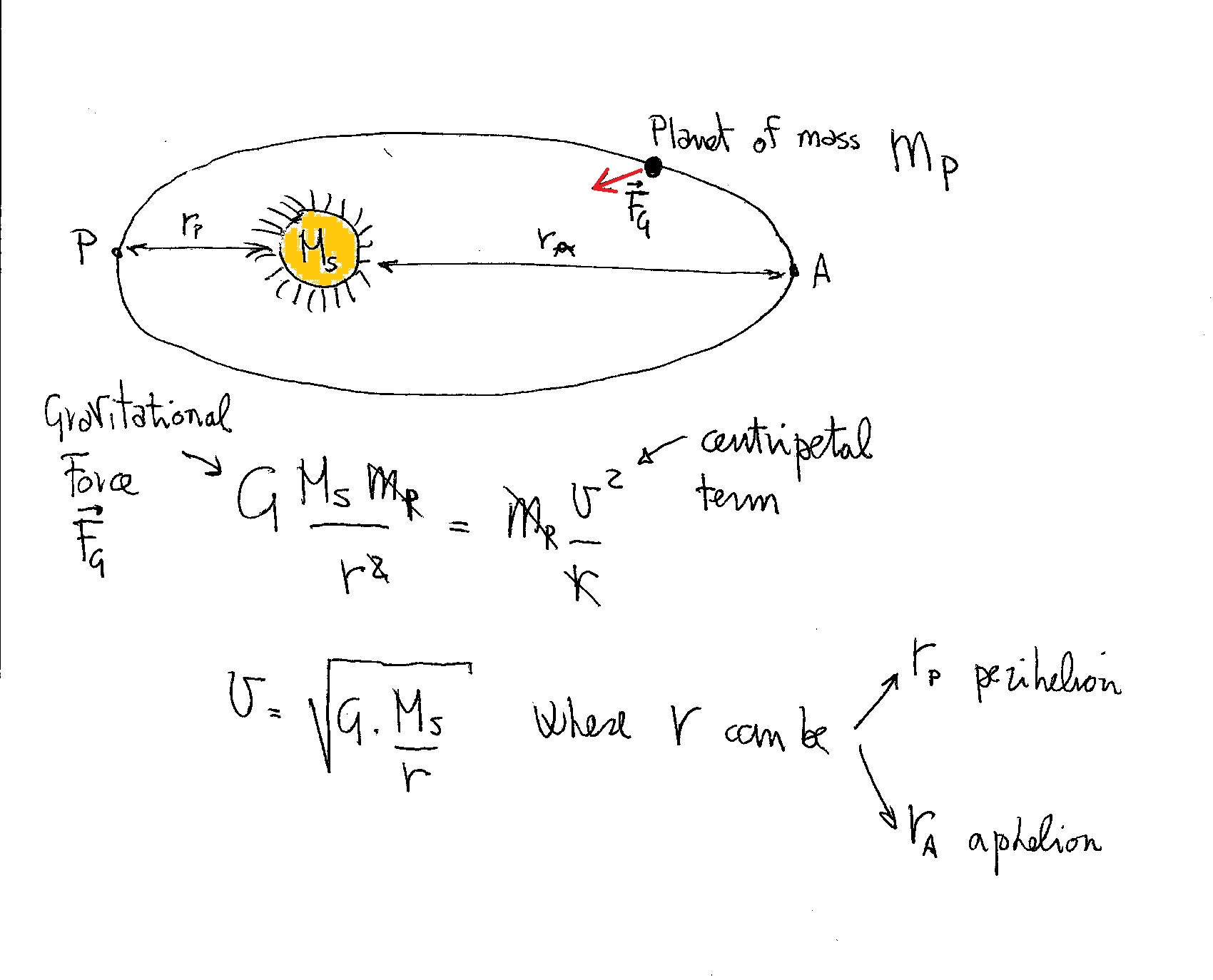What are the perihelion and aphelion speeds of Mercury? What are the perihelion and aphelion distances of Earth? How would these speeds be calculated?
2 Answers
I suppose you wanted the speeds for both Earth AND Mercury.
Explanation:
I would use the radial distances

Use the values from the literature for the mass of the Sun,
Mercury;s perihelion speed = 69.8 km's and aphelion speed is 46.0 km/s. Earth's perihelion = 147.1 million km and aphelion = 152.1 million km.
Explanation:
Let
Then, approximating
I can assure you that these approximations give 3-sd values without error, if there are no bugs in the data used..
For Mercury v = 47.4 km/s, a = 57.9 million (M) km and e = 0.2055. .
So,
This way, the perihelion and aphelion speeds of the Earth can be approximated using relevant data from sources like
NASA Planetary Fact Sheet.

